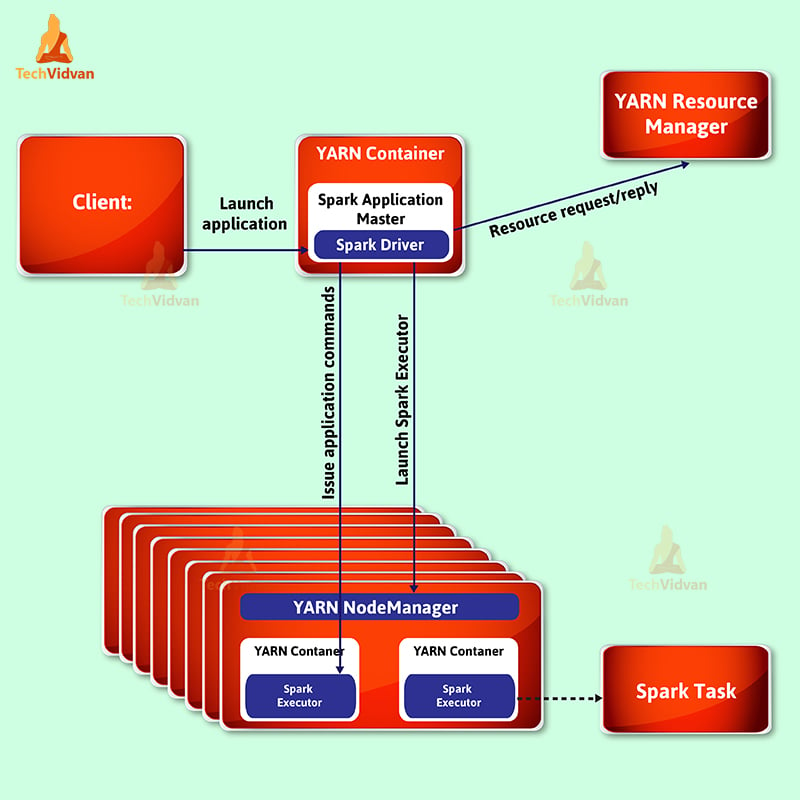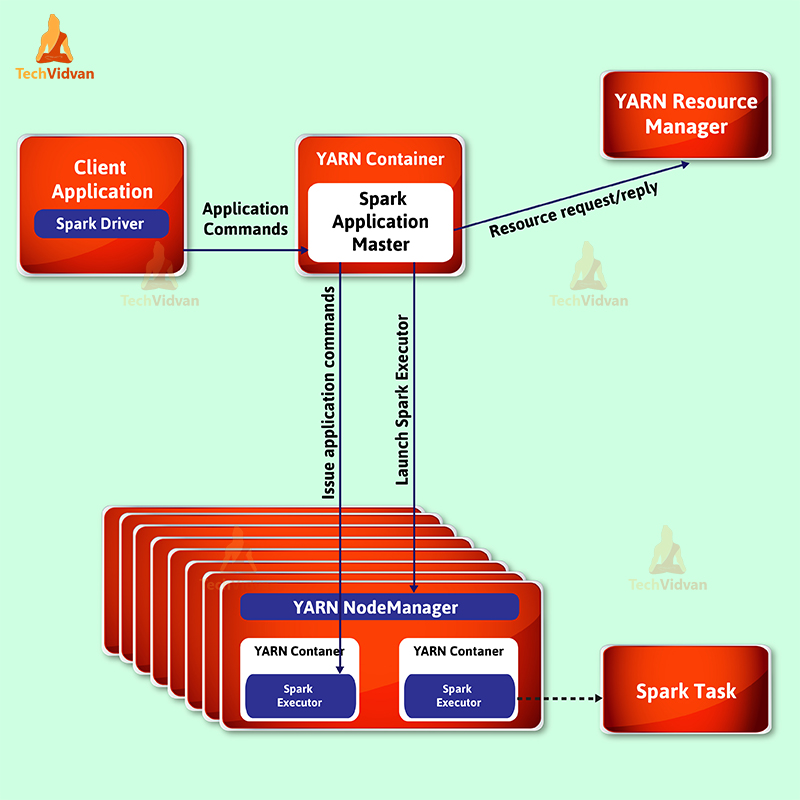Spark Modes of Deployment – Cluster mode and Client Mode
- Get link
- X
- Other Apps
Spark Modes of Deployment – Cluster mode and Client Mode
While we talk about deployment modes of spark, it specifies where the driver program will be run, basically, it is possible in two ways. At first, either on the worker node inside the cluster, which is also known as Spark cluster mode.
Secondly, on an external client, what we call it as a client spark mode. In this blog, we will learn the whole concept of Apache Spark modes of deployment.
At first, we will learn brief introduction of deployment modes in spark, yarn resource manager’s aspect here. Since we mostly use YARN in a production environment. Hence, we will learn deployment modes in YARN in detail.
Spark Deploy modes
When for execution, we submit a spark job to local or on a cluster, the behaviour of spark job totally depends on one parameter, that is the “Driver” component. Where “Driver” component of spark job will reside, it defines the behaviour of spark job.
Basically, there are two types of “Deploy modes” in spark, such as “Client mode” and “Cluster mode”. Let’s discuss each in detail.
1. Spark Client Mode
As we discussed earlier, the behaviour of spark job depends on the “driver” component. So here,”driver” component of spark job will run on the machine from which job is submitted. Hence, this spark mode is basically “client mode”.
- When job submitting machine is within or near to “spark infrastructure”. Since there is no high network latency of data movement for final result generation between “spark infrastructure” and “driver”, then, this mode works very fine.
- When job submitting machine is very remote to “spark infrastructure”, also have high network latency. Hence, in that case, this spark mode does not work in a good manner.
2. Spark Cluster Mode
Similarly, here “driver” component of spark job will not run on the local machine from which job is submitted. Hence, this spark mode is basically “cluster mode”. In addition, here spark job will launch “driver” component inside the cluster.
- When job submitting machine is remote from “spark infrastructure”. Since, within “spark infrastructure”, “driver” component will be running. Thus, it reduces data movement between job submitting machine and “spark infrastructure”. In such case, This mode works totally fine.
- While we work with this spark mode, the chance of network disconnection between “driver” and “spark infrastructure” reduces. Since they reside in the same infrastructure. Also, reduces the chance of job failure.
3. Running Spark Applications on YARN
In addition, while we run spark on YARN, spark executor runs as a YARN container. There is a case where MapReduce schedules a container and starts a JVM for each task. There spark hosts multiple tasks within the same container. Hence, it enables several orders of magnitude faster task startup time.
Spark Deploy Modes in YARN
Each application instance has an ApplicationMaster process, in YARN. That is generally the first container started for that application. However, the application is responsible for requesting resources from the ResourceManager.
As soon as resources are allocated, the application instructs NodeManagers to start containers on its behalf. For an active client, ApplicationMasters eliminate the need.
Basically, the process starting the application can terminate. Also, the coordination continues from a process managed by YARN running on the cluster.
1. Cluster Deployment Mode
When the driver runs in the applicationmaster on a cluster host, which YARN chooses, that spark mode is a cluster mode. It signifies that process, which runs in a YARN container, is responsible for various steps.
Such as driving the application and requesting resources from YARN. Hence, the client that launches the application need not continue running for the complete lifespan of the application.
Note: For using spark interactively, cluster mode is not appropriate. Since applications which require user input need the spark driver to run inside the client process, for example, spark-shell and pyspark. That initiates the spark application.
2. Client Deployment Mode
When the driver runs on the host where the job is submitted, that spark mode is a client mode. To request executor containers from YARN, the ApplicationMaster is merely present here. To schedule works the client communicates with those containers after they start.
- Get link
- X
- Other Apps


Comments
Post a Comment